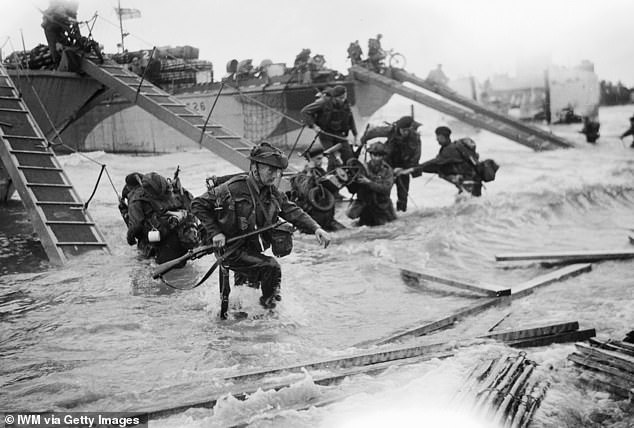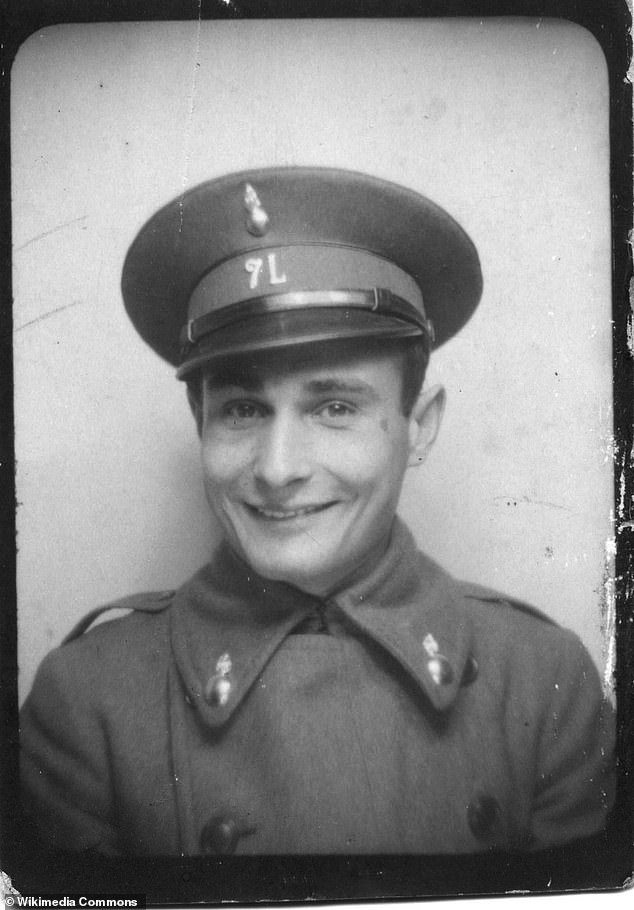The brilliant double-agent who tricked Hitler and saved D-Day – and how the British had initially rejected him as a spy!
CLASSIFIED! THE ADVENTURES OF A MOLE HUNTR
By Nigel West
(Biteback publication
£25,384pp)
Was the ultimate success of D-Day due in large part to a single man? A man whose real identity was unknown until the 1980s – and is barely a household name even today?
It sounds a little too much like a hokey Hollywood movie to be true. And yet this is the suggestion of the brilliant, even obsessive ‘molehunter’ and tracker of spies, Nigel West – a pseudonym for Rupert Allason, Conservative MP under Mrs Thatcher and John Major – in this book about his investigation into espionage over the past 50 year.
Consider the evidence. Arguably the most important day in recent military history was June 6, 1944 – D-Day – when the Allies finally landed in France and began pushing back against the Nazis from the beaches of Normandy. It was truly a race against time. If these landings had failed and a new attempt that summer was deemed impossible, the element of surprise would have been lost and the war would have continued for at least another two years.
By then, Hitler could well have perfected weapons such as “the Me262 fighter jet, the Henschel guided missile and perhaps a ‘dirty’ uranium warhead for the V-2 ballistic missile,” says West, which might have changed the war completely .
Double agent Juan Pujol Garcia, codename Garbo, pictured outside Buckingham Palace during a visit to London
As the Duke of Wellington is said to have said of the Battle of Waterloo, D-Day was ‘a bloody close run thing’.
But for all the dogged courage of the soldiers on the ground, the brilliance of military planning, the engineering marvels such as floating ‘Mulberry harbours’ and the engineering genius of men like Alan Turing who cracked the Enigma code, there was another, more There was a hidden force at work that helped make D-Day – ultimately, after months of hard and bloody fighting – a success: the work of military intelligence, especially in feeding the Germans with false information. The most crucial lie is that the Allies would try to invade Pas-de-Calais, not Normandy.
To convince them of this, Germany’s own spies were briefed on the massive troop build-up in Kent, and warned that any other apparent Allied plan was a diversion: the opposite of the truth.
Even agricultural machinery in the southeast was converted to leave tank tracks for Luftwaffe reconnaissance pilots to photograph.
It was a deadly, baffling game of truth and lies, bluff and double-bluff, and a certain double agent named Garbo “had the lion’s share of the deception campaign on his shoulders.”
Even a month after D-Day, the German High Command still so relied on Garbo’s assurances that a second Allied attack could be launched near Calais that valuable German regiments were sent there instead of to Normandy. Brilliant!
But who was this agent with pockets full of brutality and nerves of steel? The official story claimed that Garbo died in Angola in 1949. But after much chasing, in 1984 West finally tracked down an elderly Spaniard named Juan Pujol Garcia, then living in Caracas, Venezuela, who admitted to being the brilliant double agent.
In June of that year, Garcia visited the beaches of Normandy, which must have been an emotional trip. He died in 1988.
Remarkably, Garcia was turned down when he first approached the British Embassy with his offer to spy for them. Only when he gained favor with the Germans did the British accept his offer to become a double agent.
There are many more fascinating stories here, from this shadowy world we know so well from the novels of John le Carré. West even confronted the master of the spy novel with his own secrets – something Le Carré did not appreciate.

Royal Marines storm the beaches in June 1944. Forty years later, in June 1984, Garcia visits Normandy on what must have been an emotional journey. He died in 1988

After much pursuit, West found Garcia in 1984, who is depicted here as a young man.
Le Carré worked for MI6 until the mid-1960s and had ‘a stormy affair in Germany with the wife of an MI5 officer’, which made him clearly unpopular. But he started spying for MI5 as early as 1952 – on his fellow students at Oxford.
Granted, many may have been naively communist or pro-Soviet in sympathy, in their tweedy privileged way, but it must take a special temperament to spy on fellow students and friends and report on them in a cold official atmosphere. No wonder Le Carré’s novels are so haunted by betrayals of various kinds.
Many officers here are certainly not the inconspicuous ‘grey man’ of George Smiley, but rather flamboyant. Take Ronnie Seth, for example, ominously codenamed Blunderhead by the Special Operations Executive. He parachuted into occupied Europe in 1942, was captured by the Gestapo, narrowly escaped execution, and finally reappeared in Paris in 1944 – dressed in a Luftwaffe uniform! Later he started selling his ‘patented penis enlarger by mail order’.
And what spy writer in his wildest imagination could have imagined a dedicated Soviet spy who was eventually knighted and went on to work as a Surveyor of the Queen’s Pictures? I’m of course talking about Anthony Blunt.
“I felt almost physically unwell at his cold-blooded attitude to his betrayal,” West writes, “which, he admitted, had resulted in the death of at least one British source in Moscow.”
Most bizarre of all, a top-secret bunker where the wartime British government could be safe from any form of aerial bombardment turns out to be a rather hideous windowless building in Dollis Hill, North West London, which is still standing. Literally bombproof, demolition would be too expensive!
Finally, savor the moment in 1990, in the heady days of post-Soviet perestroika, when the historian John Costello boldly flew to Moscow, marched to the old KGB headquarters on Dzerzhinsky Square, knocked on the door and asked to look through all the old KGB archives. Sure, they said in just as many words. Come in.
I’m not sure this would be that easy today.
